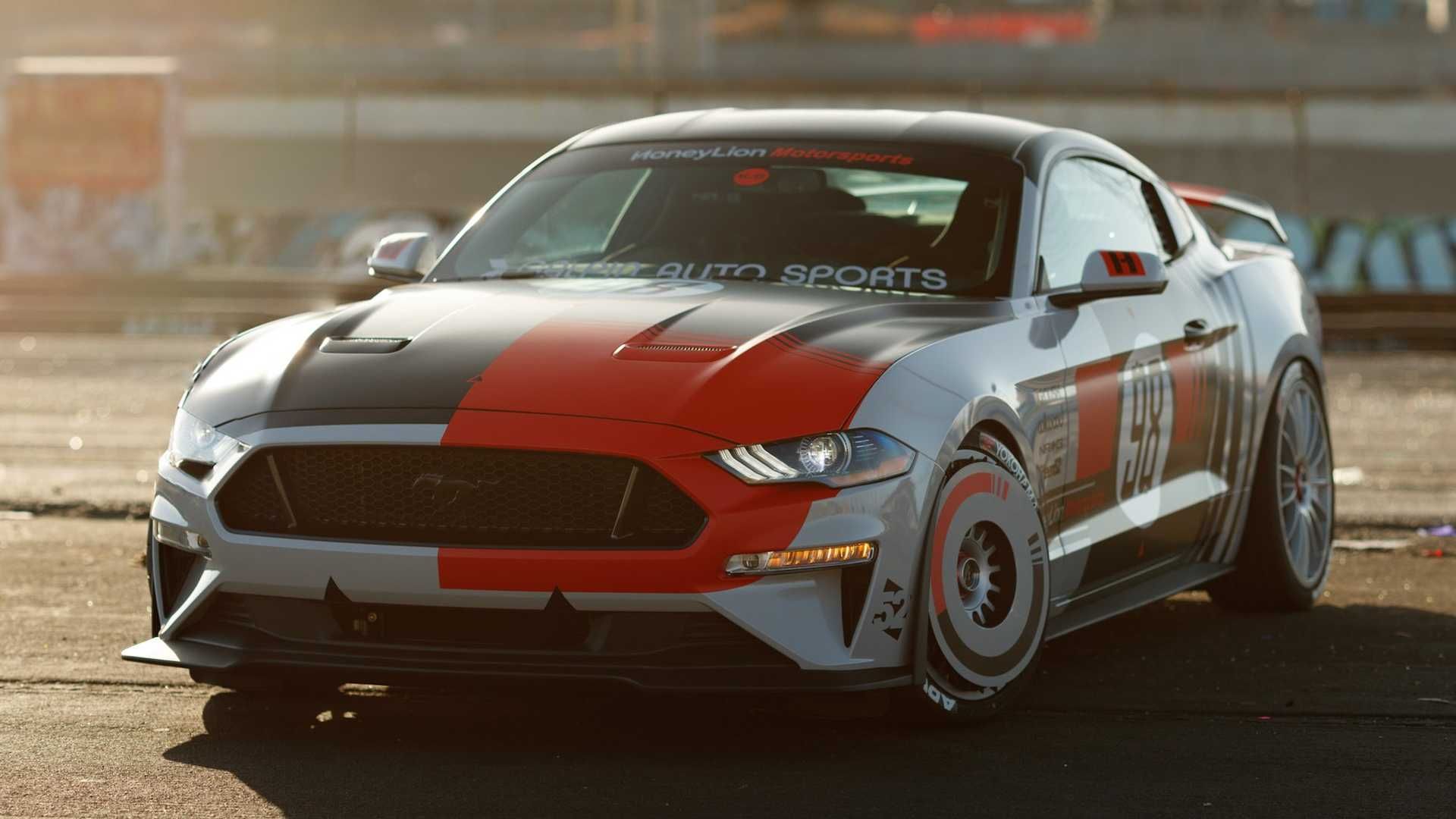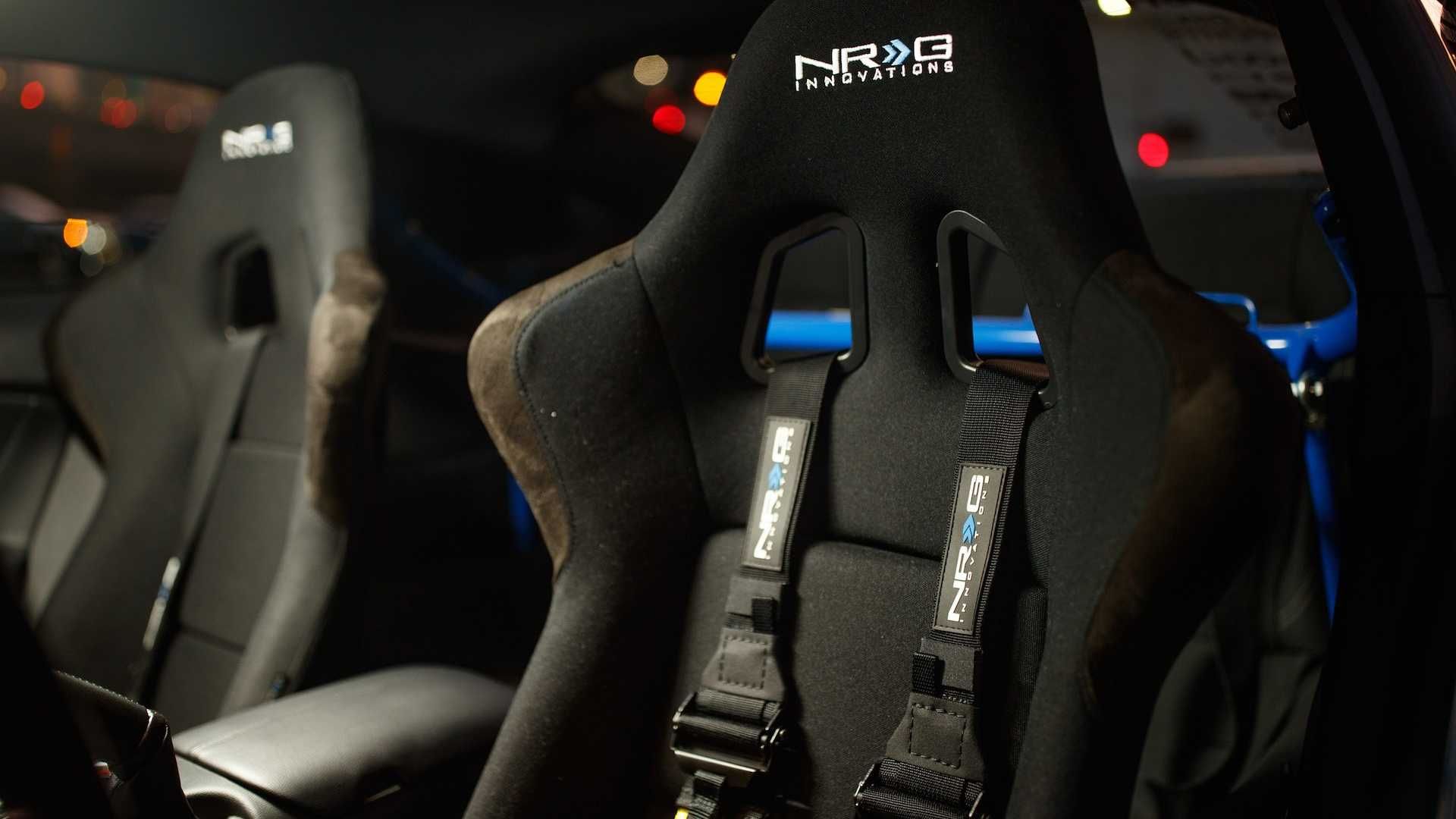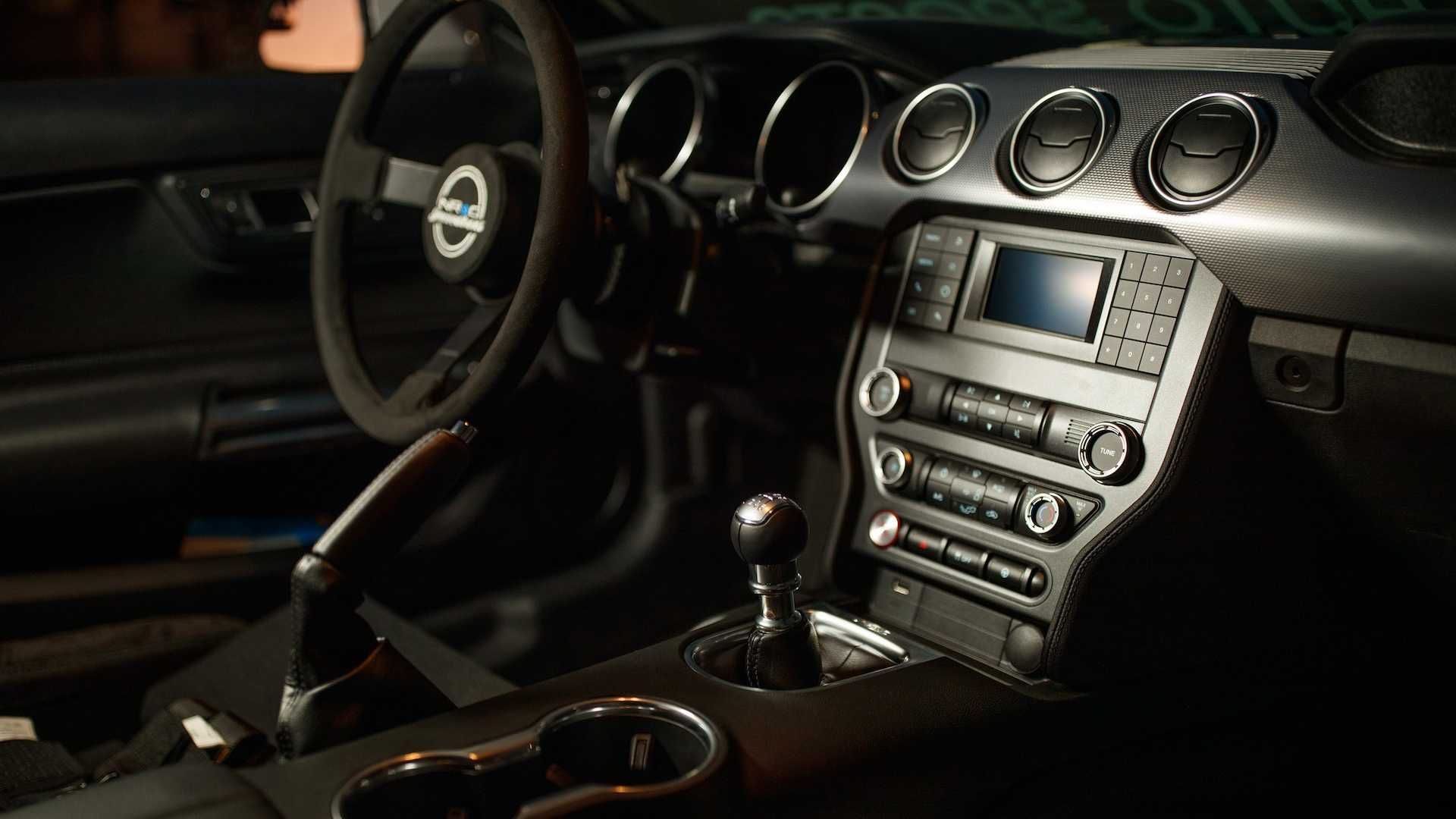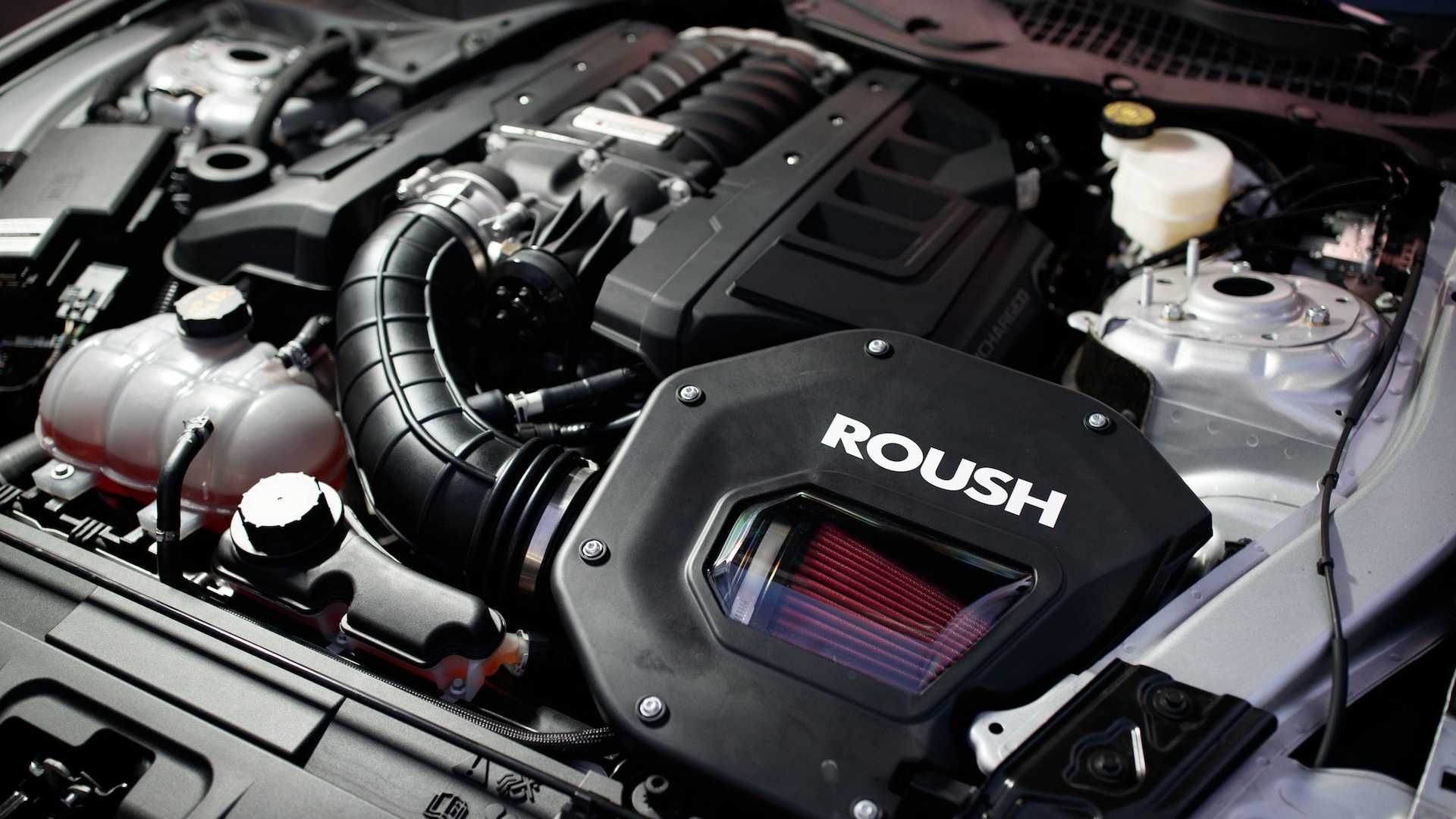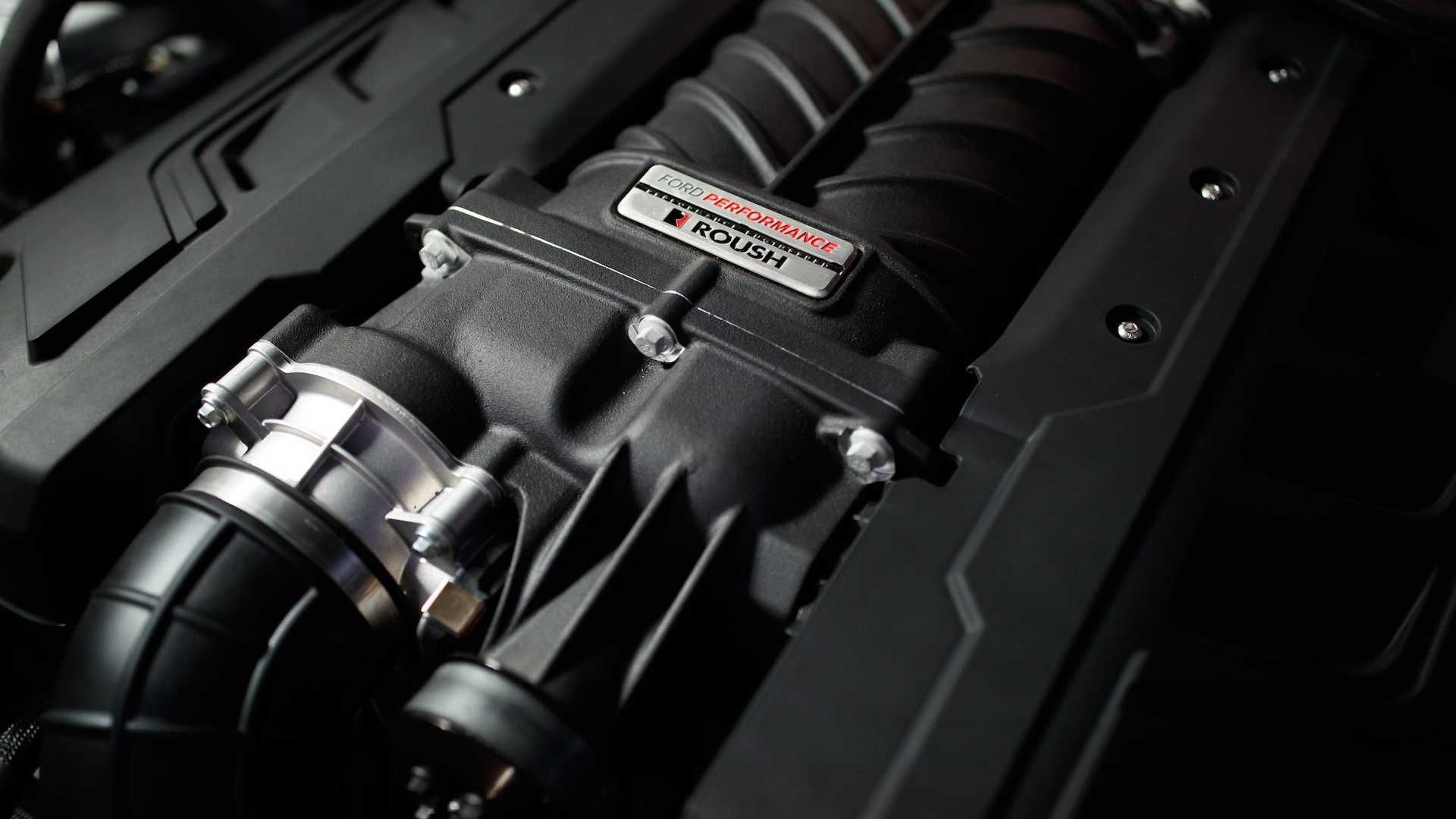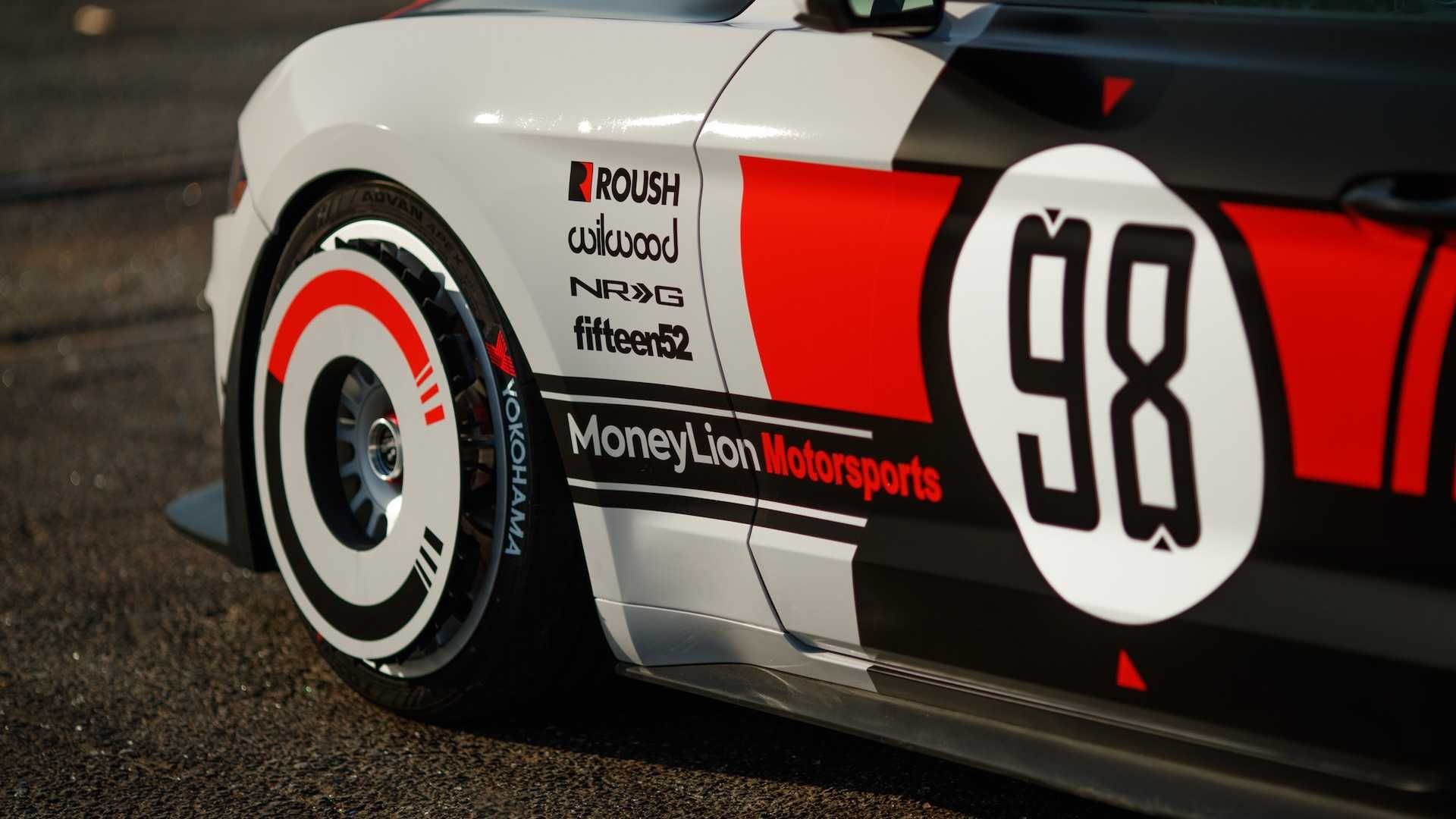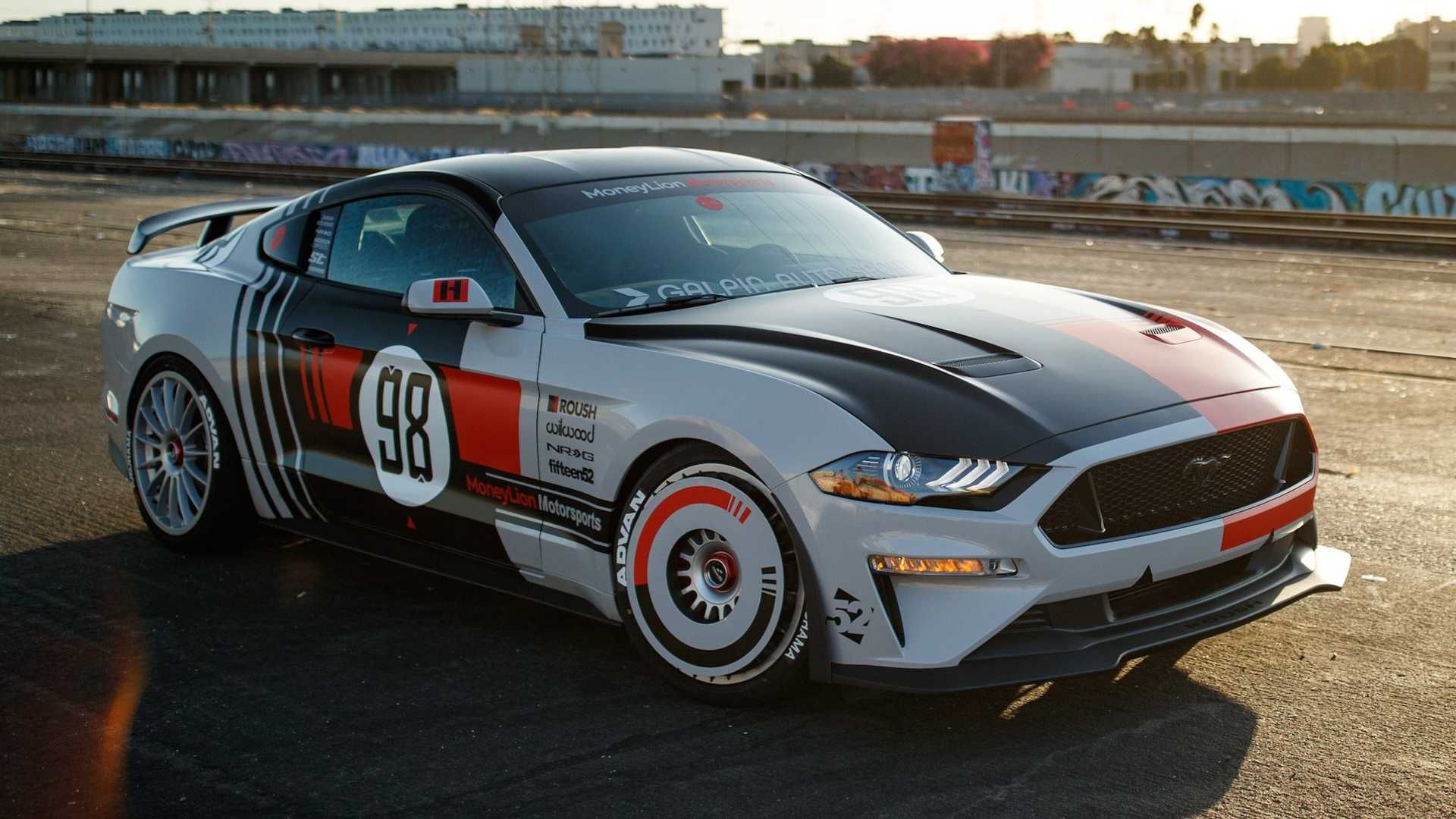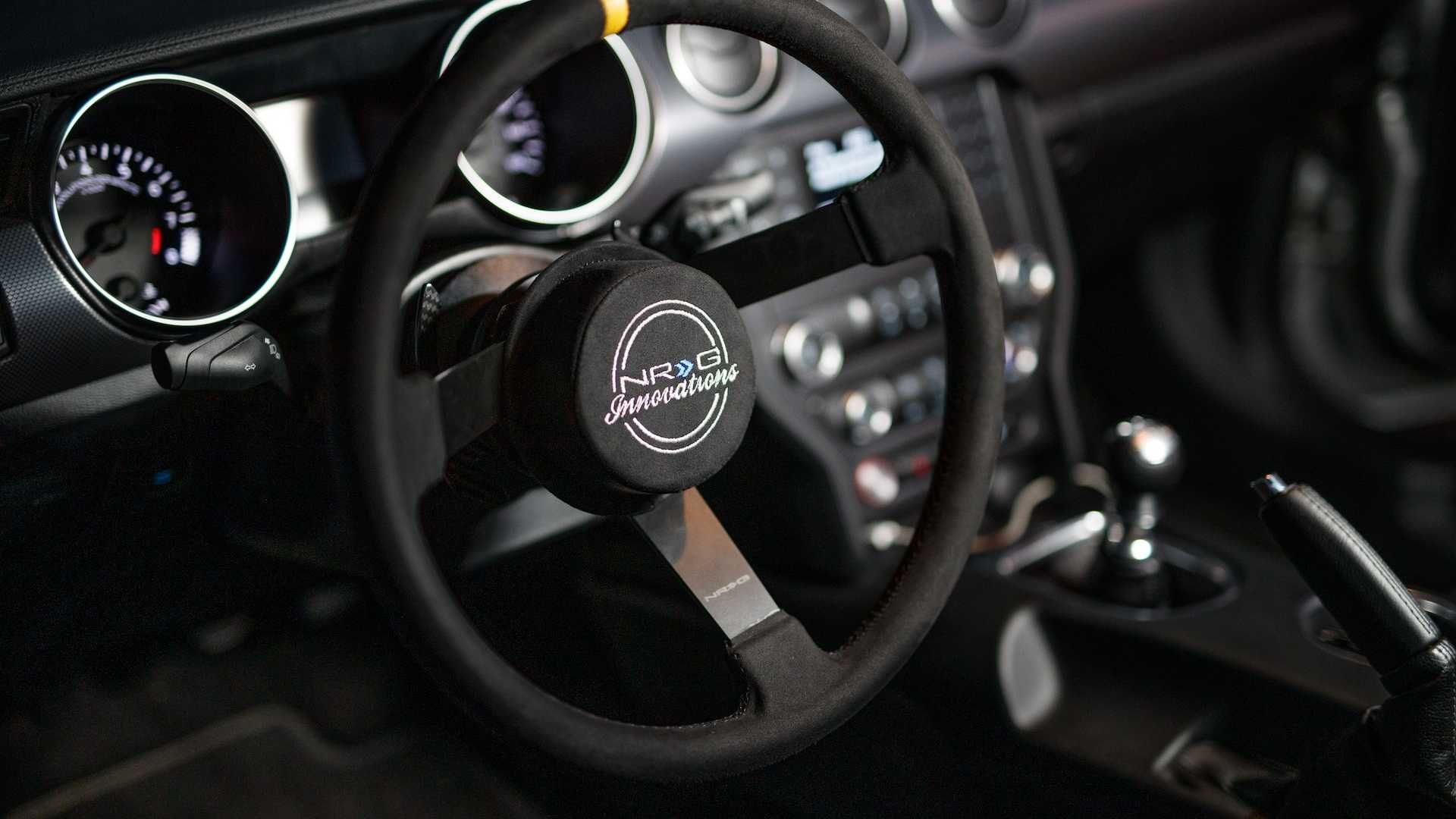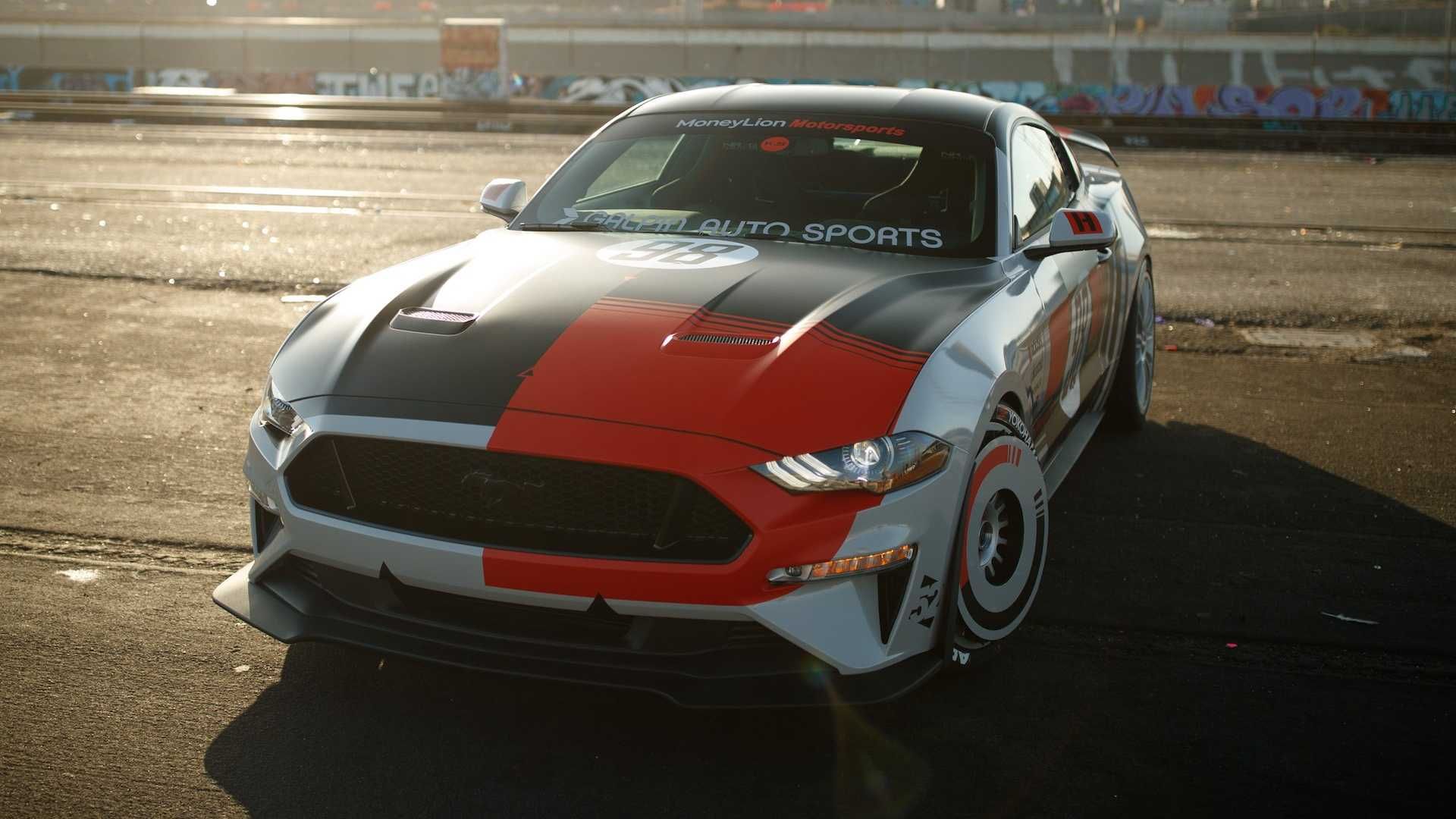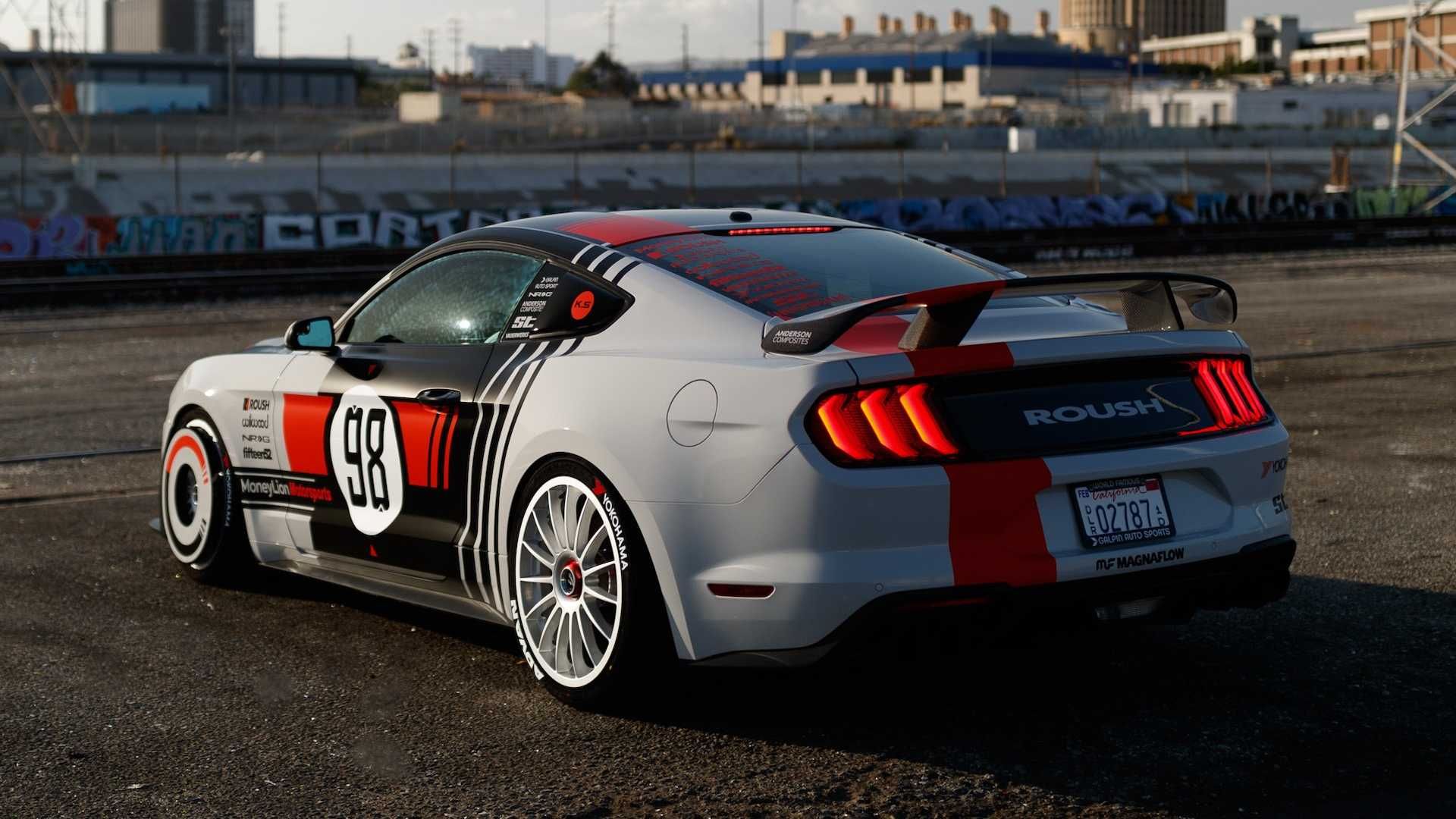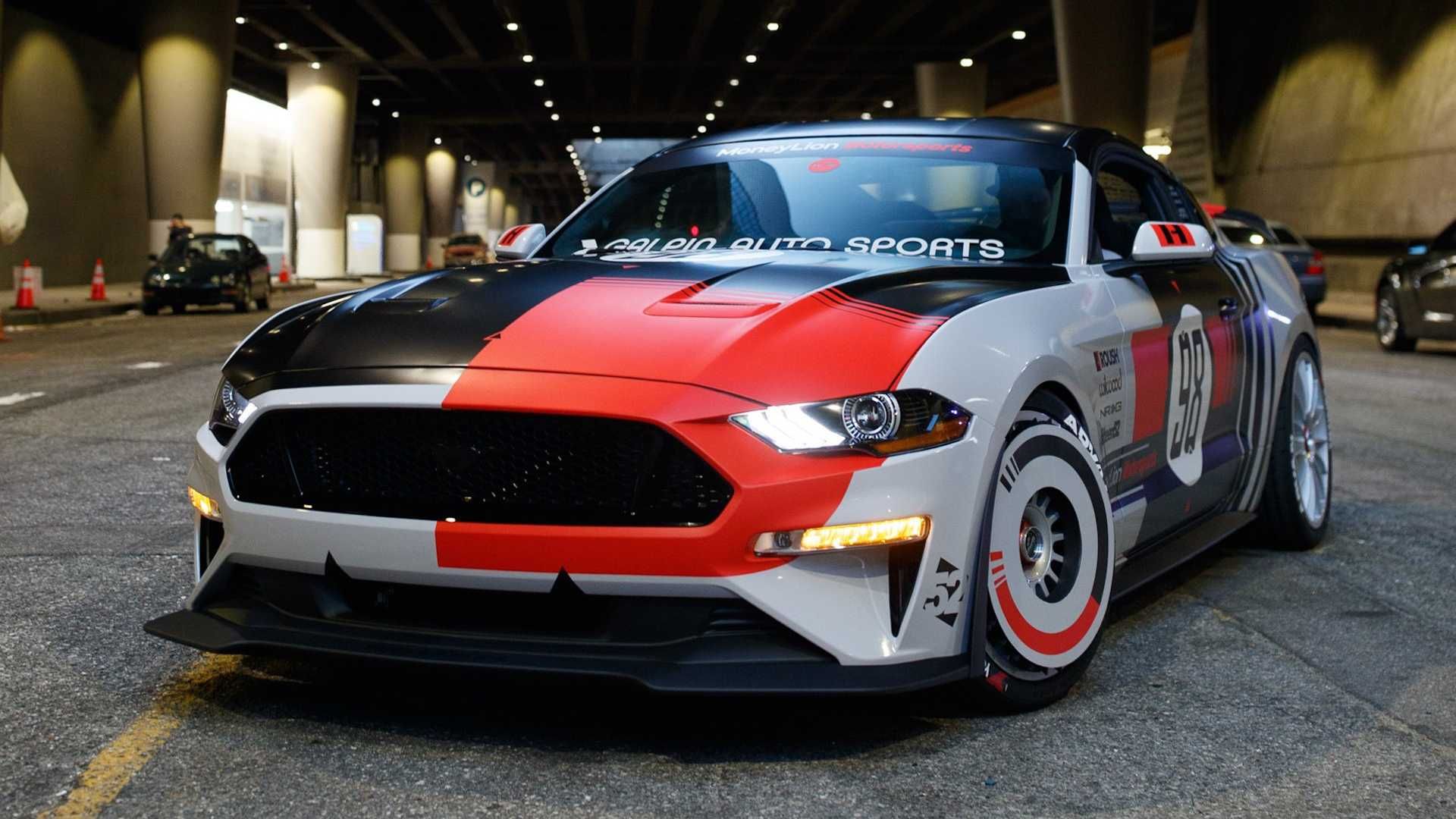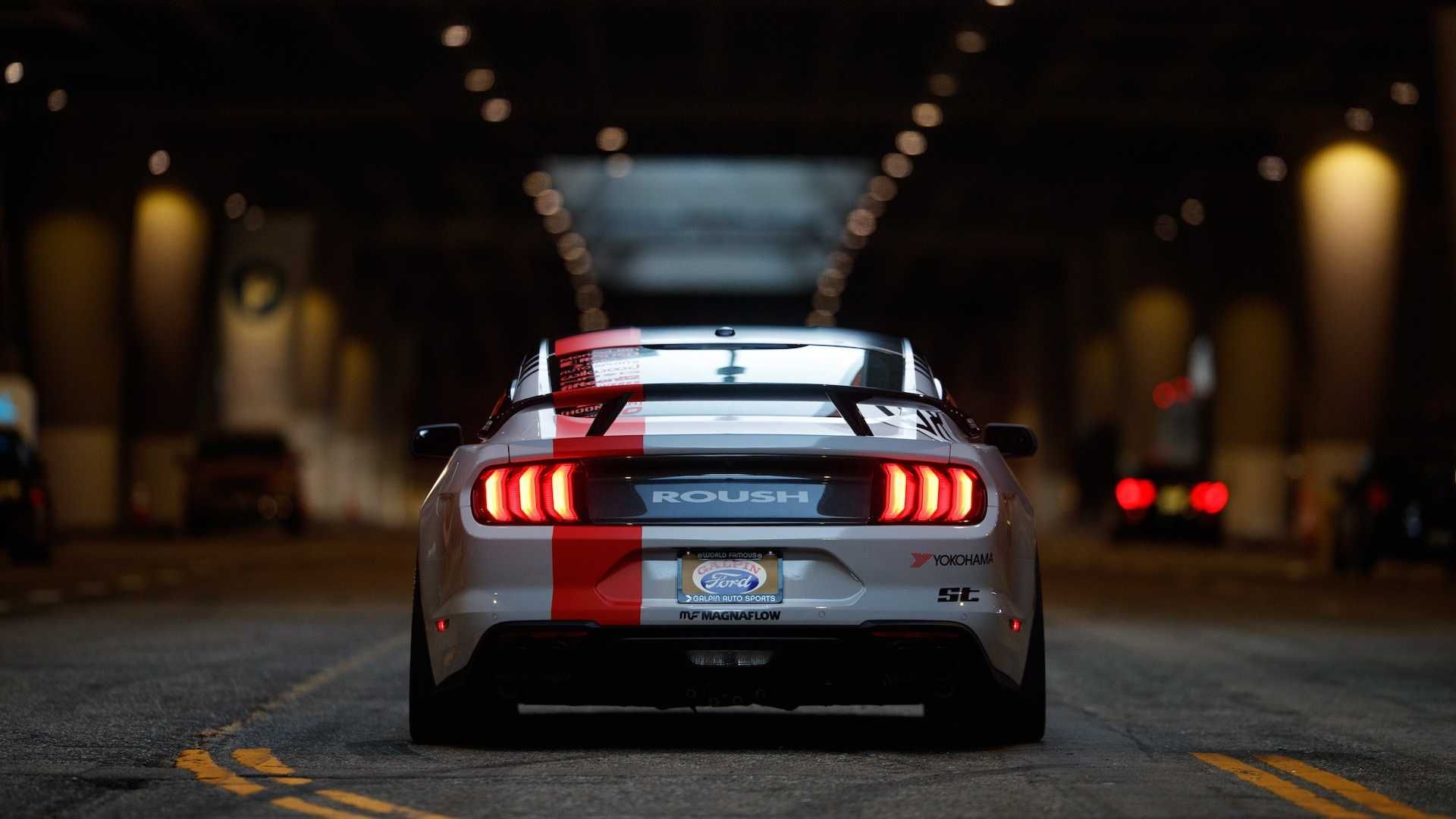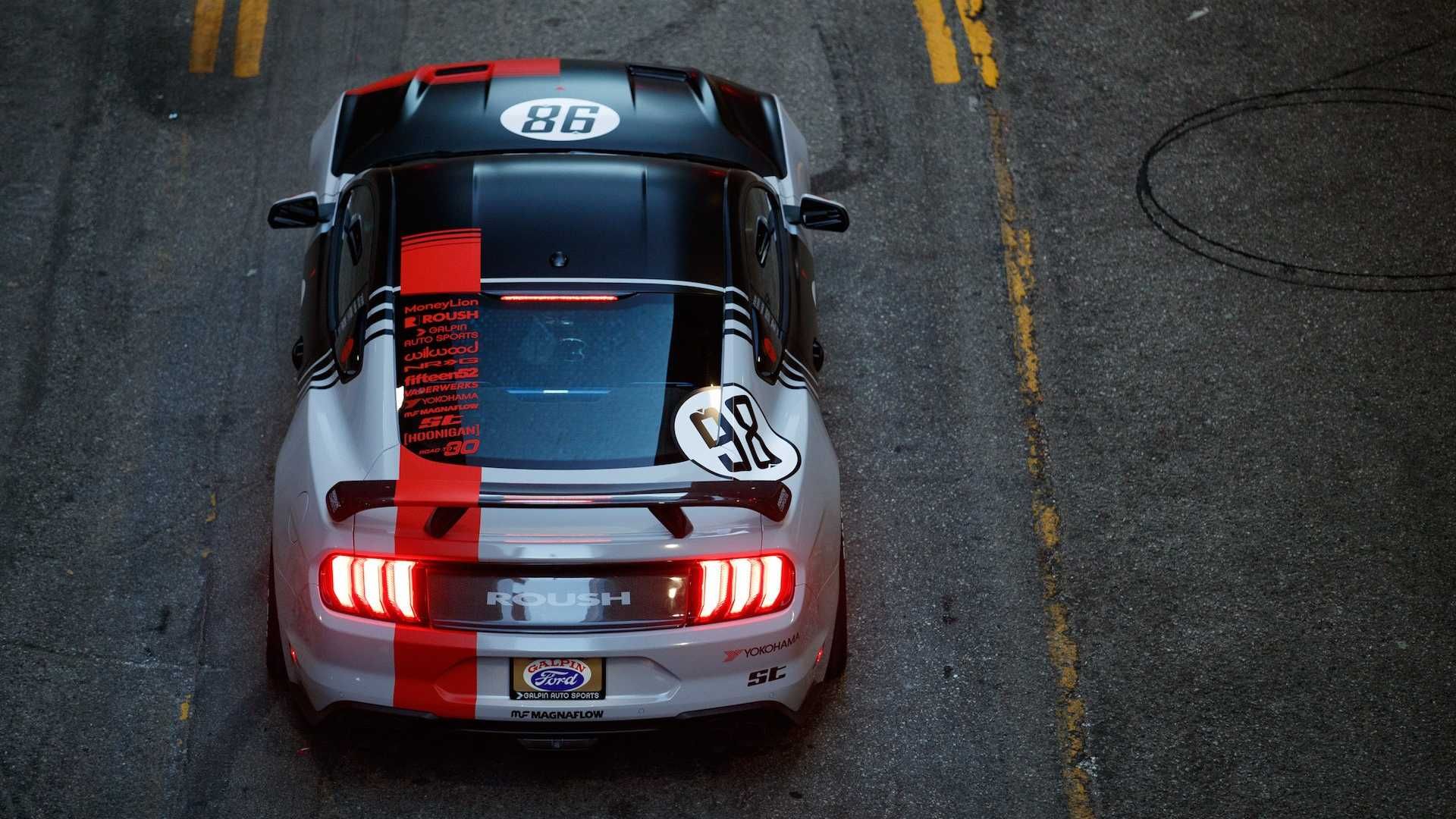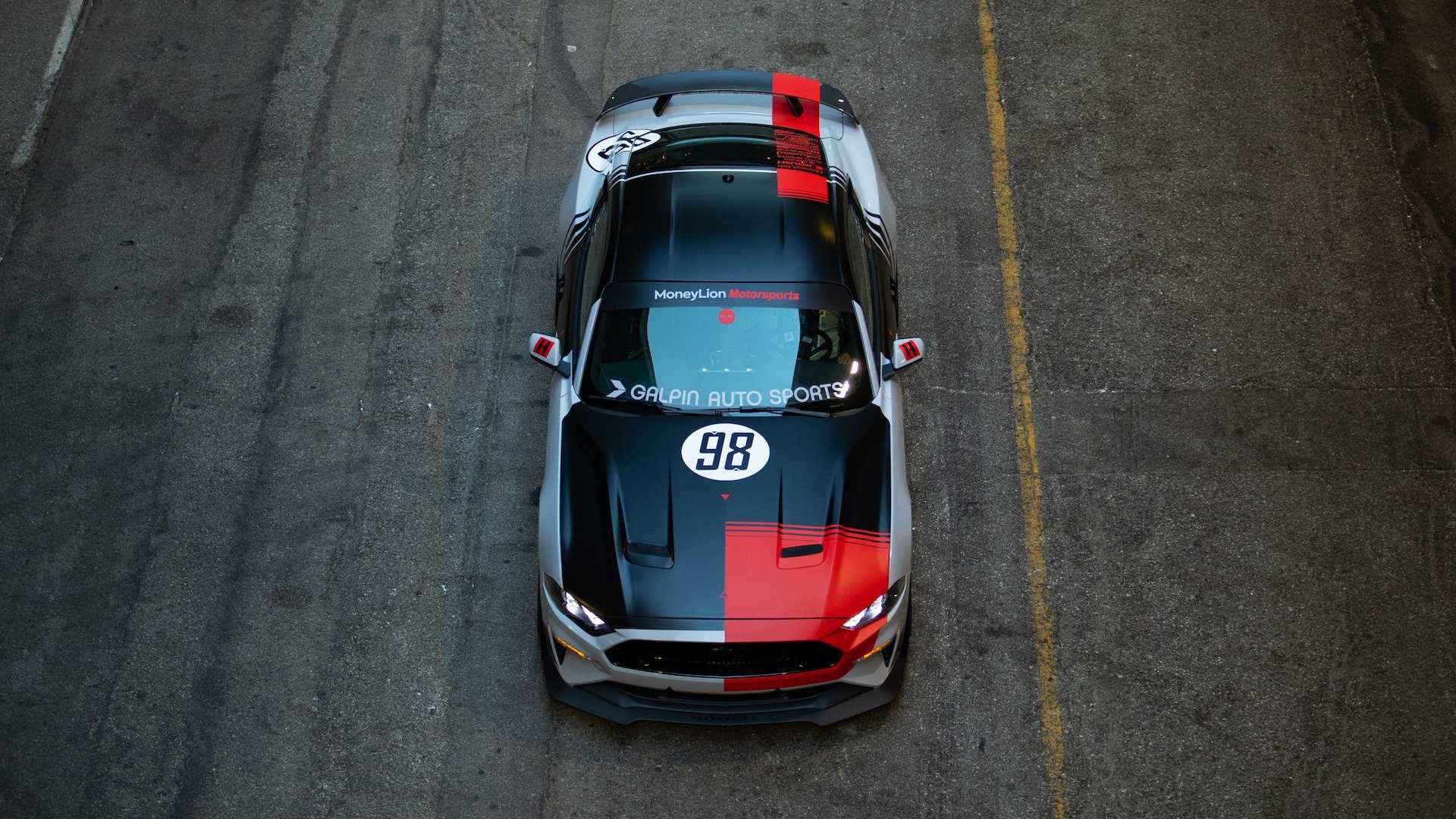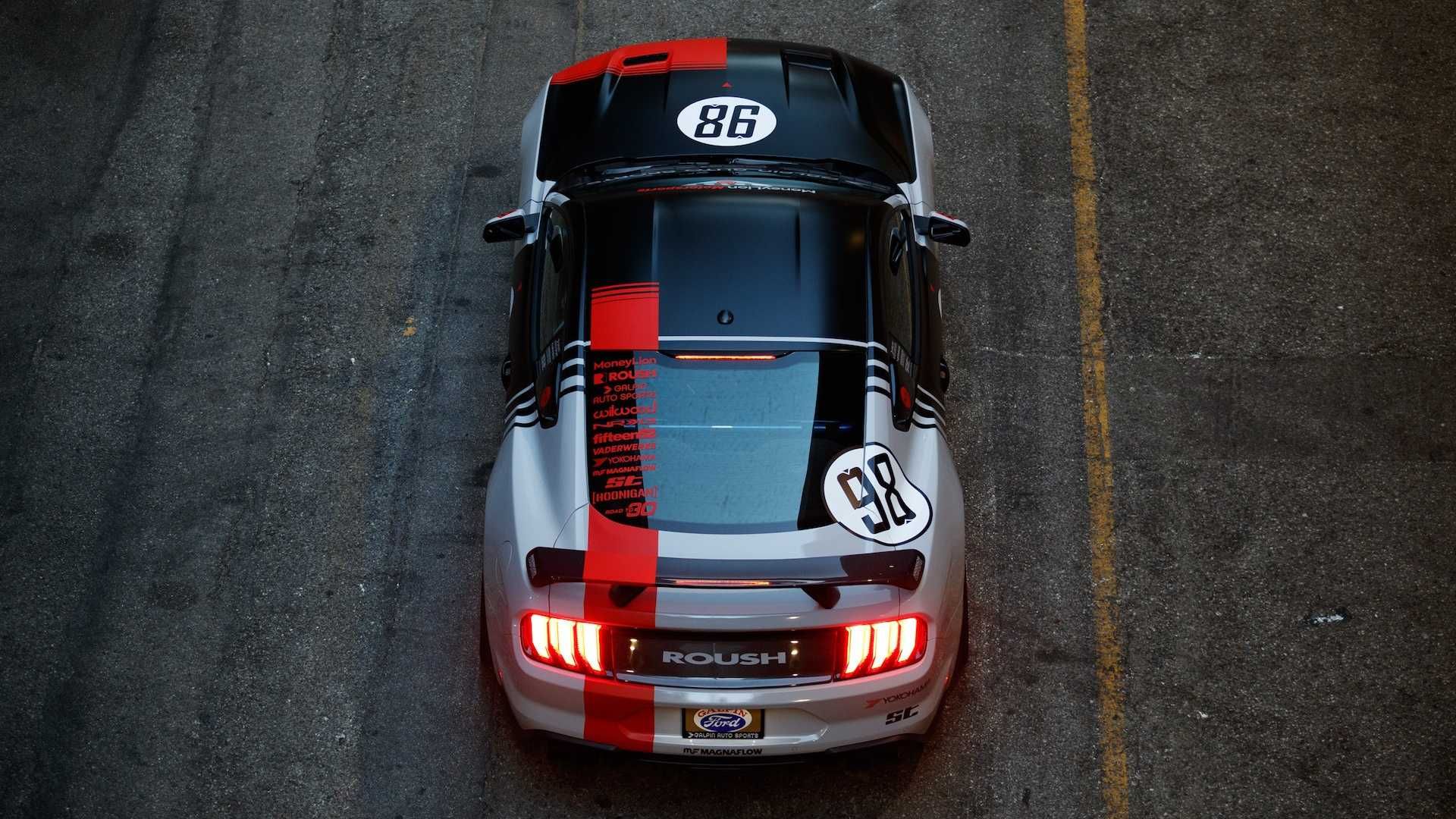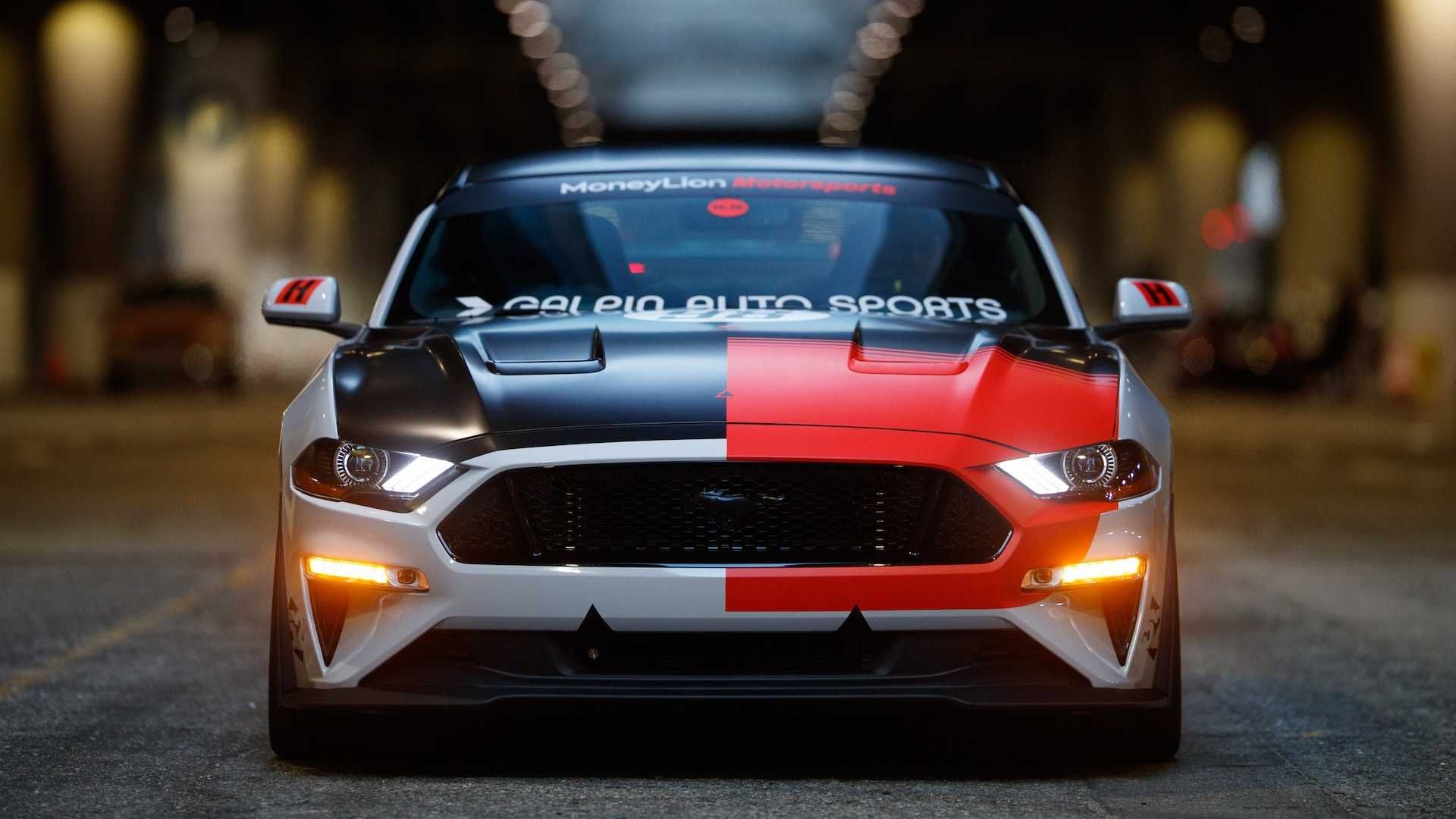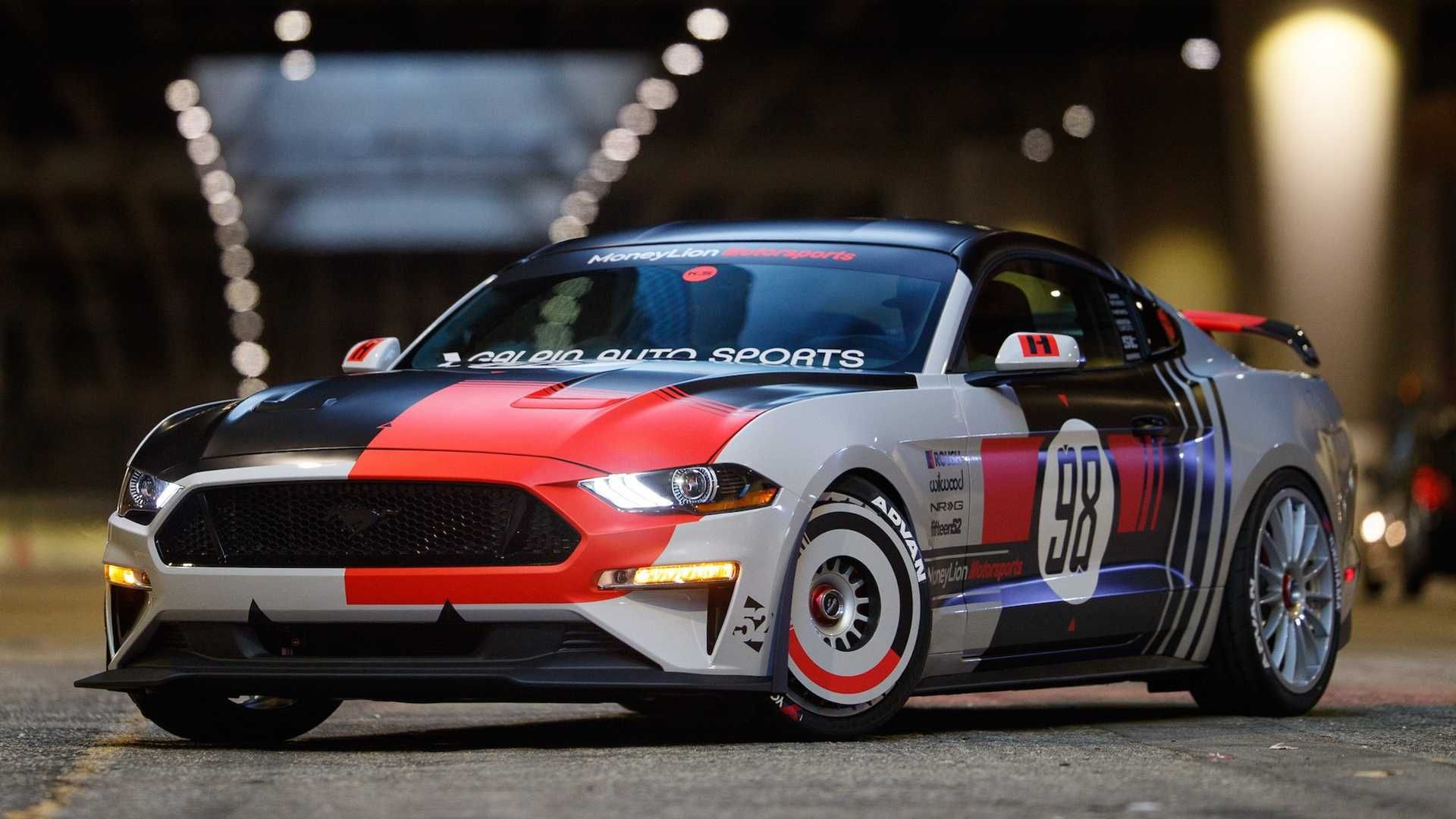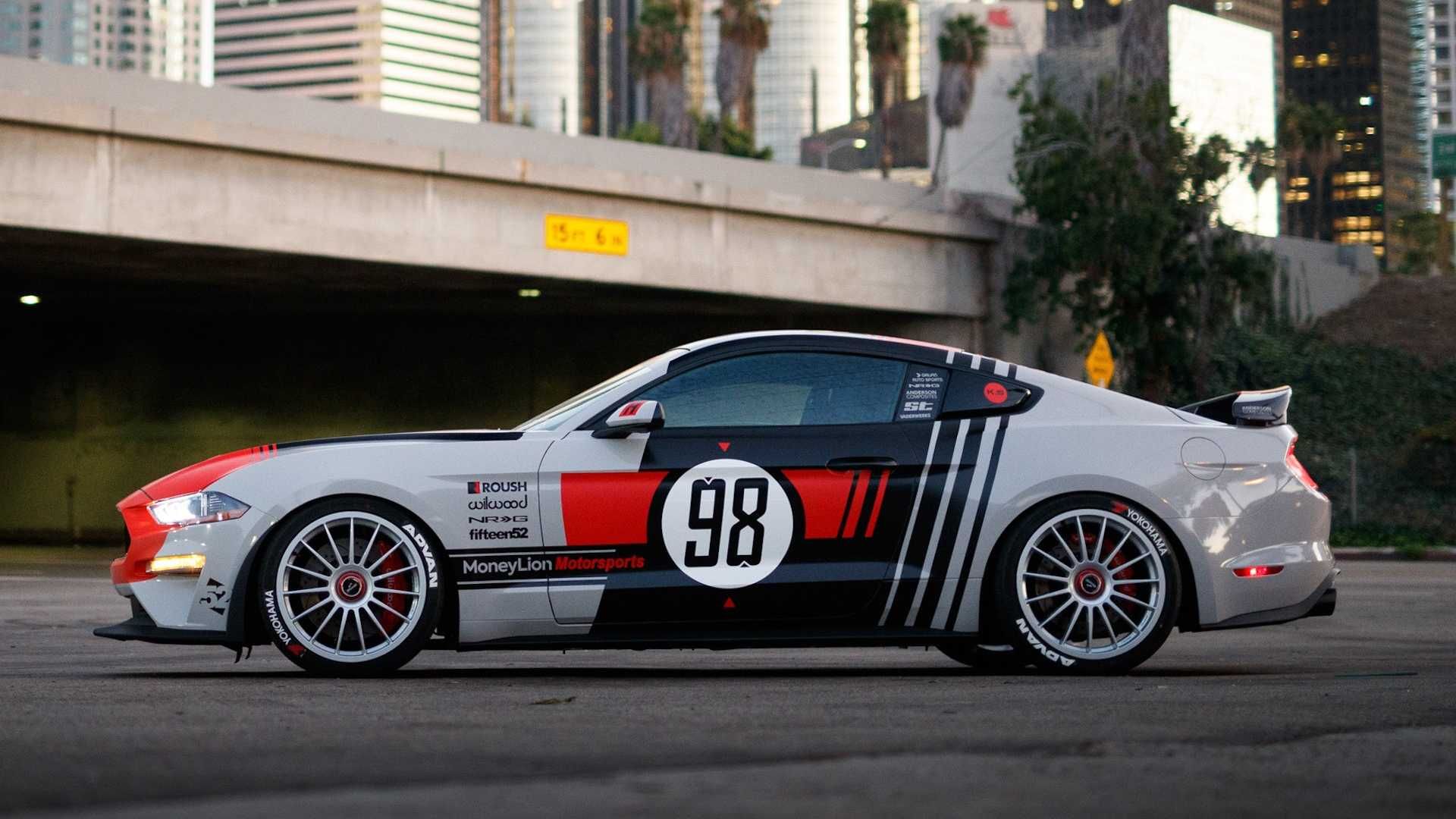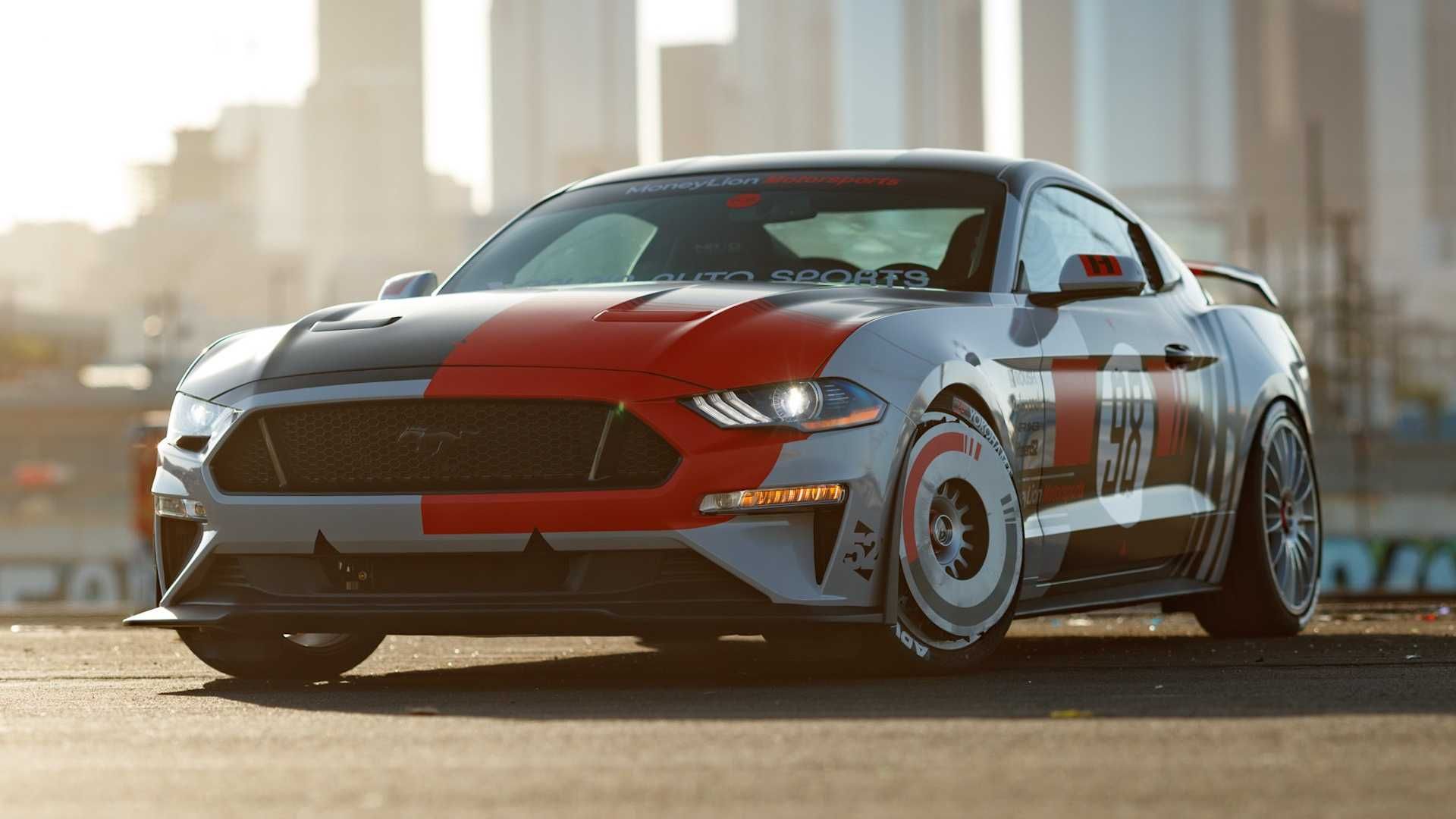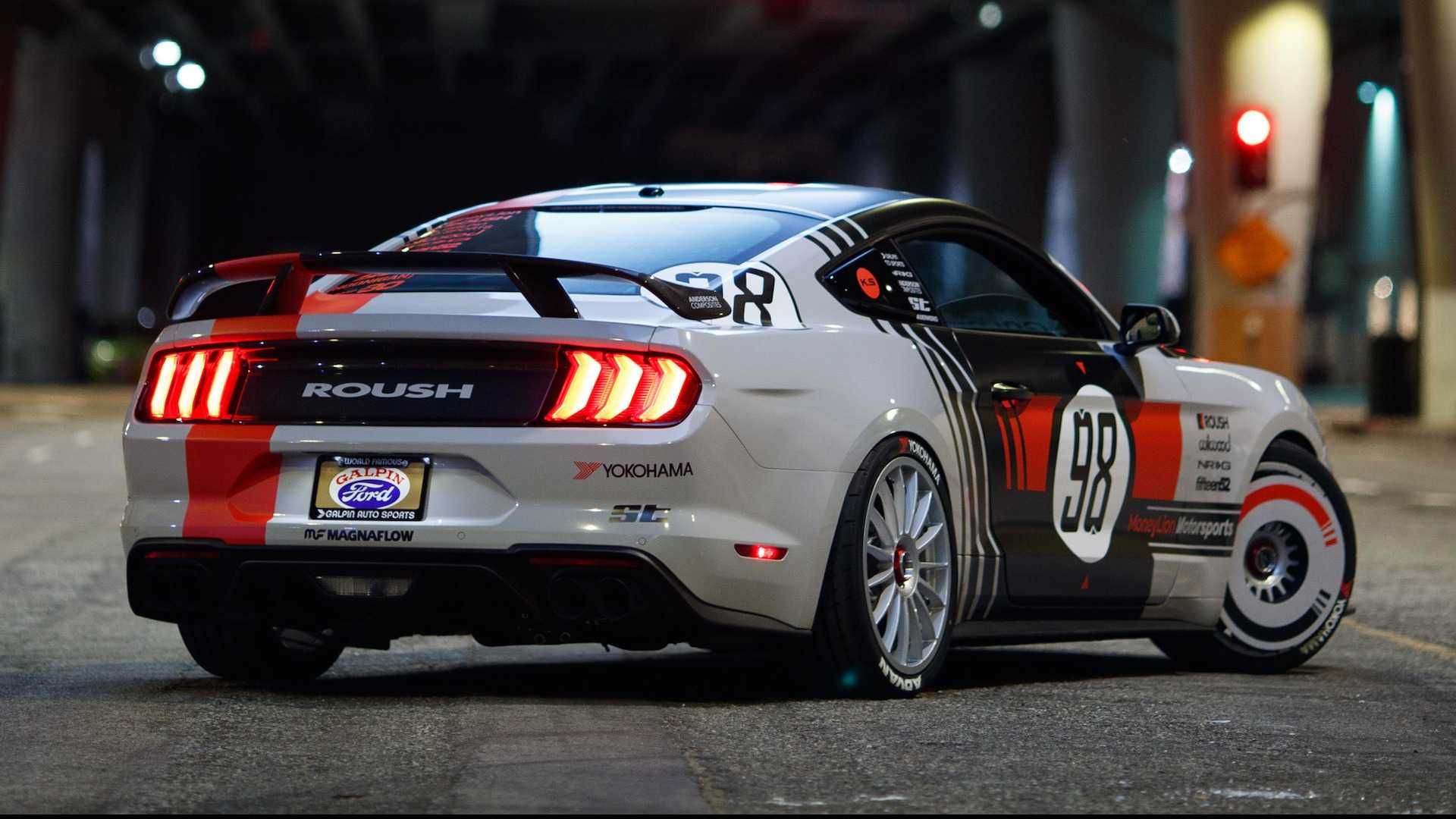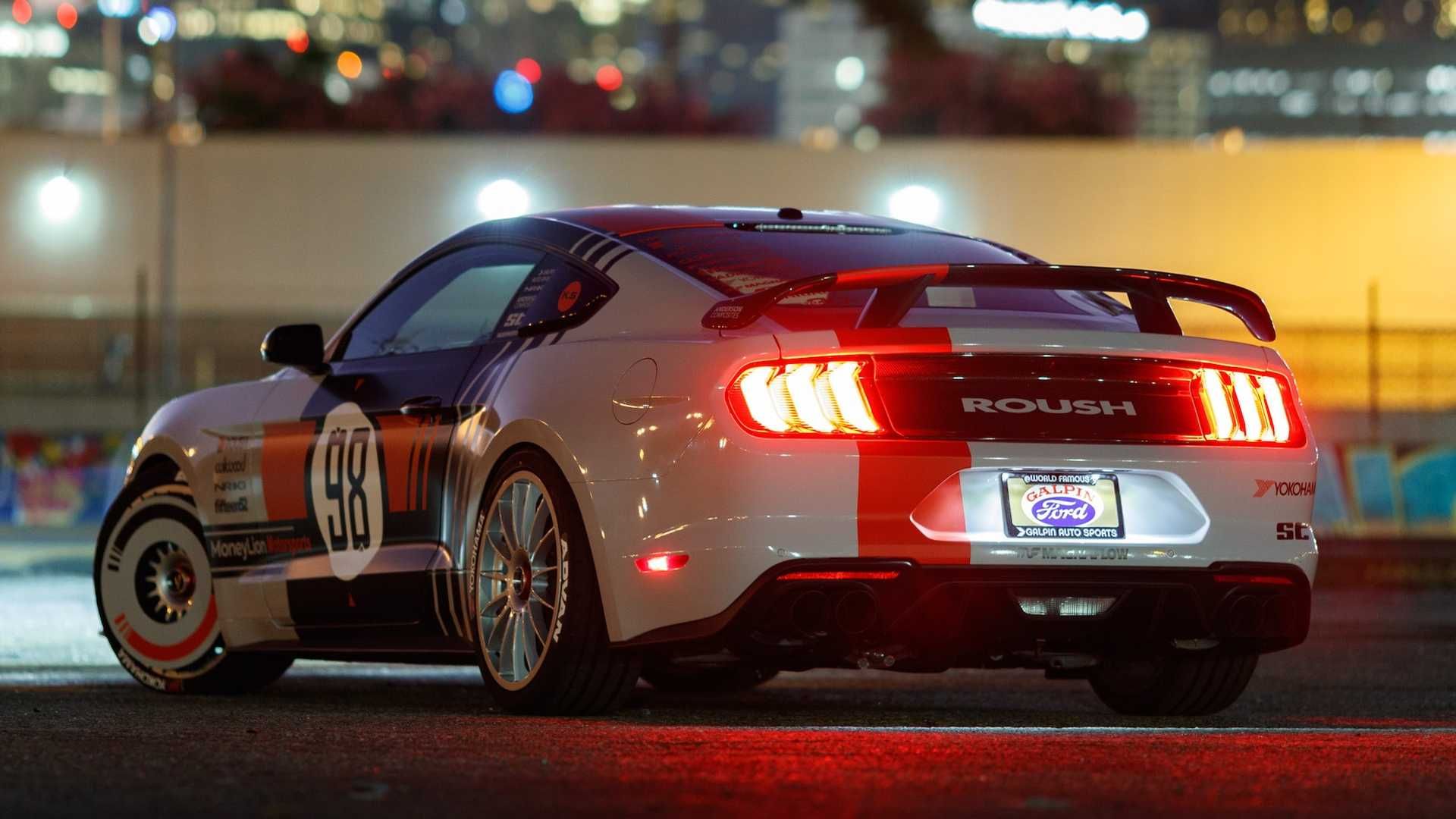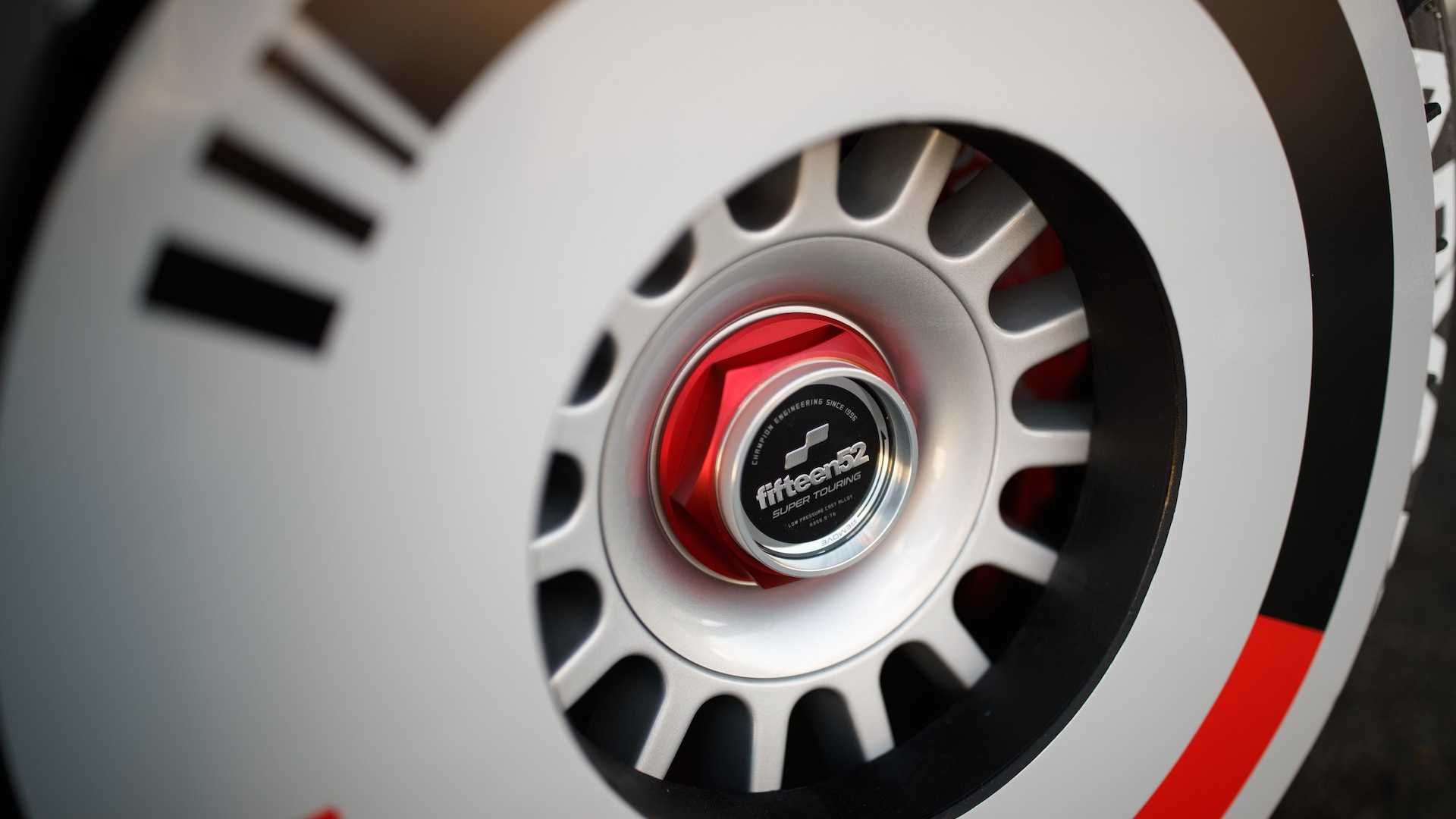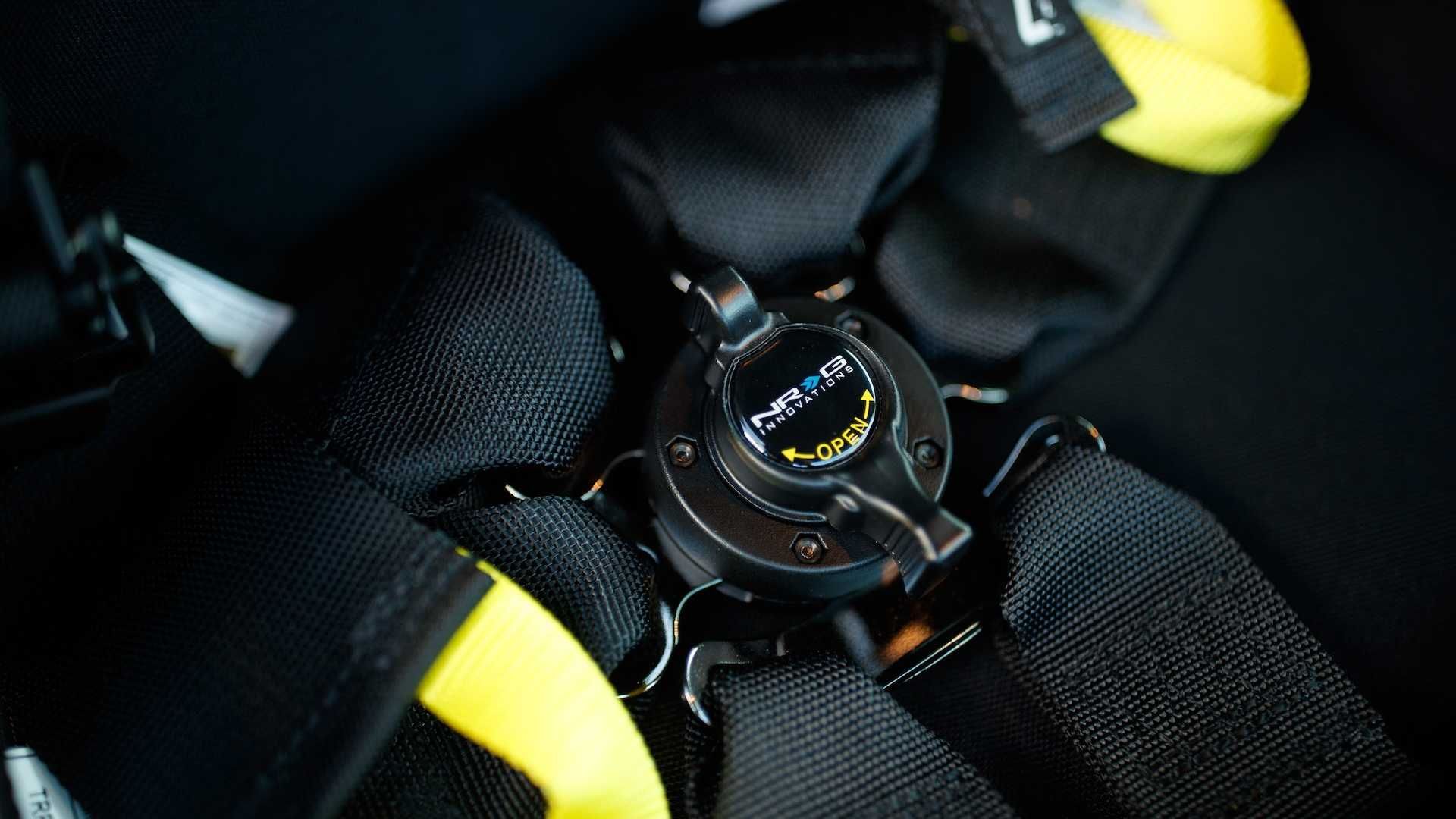The Ford Mustang is a fixture at the SEMA Auto Show, and this year will be no different. Fresh from the aftermarket oven comes this current-generation Ford Mustang GT. It comes by way of mobile bank MoneyLion’s “HERE WE ROAR” sweepstakes and it’s one of three custom-tuned Mustangs that can be won through the competition.
This particular Mustang was created by Team Penske NASCAR Cup Series driver Ryan Blaney and world-renowned automotive photographer Larry Chen. Both received help from some of the best tuners in the country, and the result is a 700-horsepower performance machine that can set drag strips and race tracks on fire.
2019 Ford Mustang by Ryan Blaney and David Chen
- Make: Array
- Model: 2019 Ford Mustang by Ryan Blaney and David Chen
- Horsepower: 700
- Torque: 610
- [do not use] Vehicle Model: Array
Exterior
As far as SEMA-bound Ford Mustangs go, this particular model created by Team Penske NASCAR Cup Series driver Ryan Blaney and world-famous automotive photographer Larry Chen fits into what the show is all about. Blaney and Chen’s creation is the third of three custom-built 2019 Ford Mustang GTs that were created for MoneyLion’s HERE WE ROAR Sweepstakes.
The exterior design of this Mustang is roar-inducing.
Obviously, Blaney and Chen created their own livery design for this Mustang. The Mustang wears the white finish — it actually looks a little more like gray — as its base color. Red and black colors come into play as decals spread throughout the body of the muscle car. The hood, for example, comes in a two-tone red and black color while the rest of the body features the same color setup, used in different ways. There’s also a circular “98” racing number on both doors and the logos of all the aftermarket firms that played a role in this Mustang’s creation just behind the front wheels.
On the aerodynamic side, the Mustang is tricked out with a handful of equipment that’s going to enhance its performance capabilities. There's a front lip spoiler that was sourced from Roush Performance. The quarter window covers are also from Roush Performance. In the back, the Mustang's carbon fiber trunk comes from Anderson Composites, a new decklid, and a large Type AT rear spoiler that's in place to provide the kind of aerodynamic improvements that the Mustang can tap into if some poor schmuck decides to challenge it on a drag strip or race track. Best be careful what you wish for, if you happen to be that poor schmuck.
Compared to the two previous Mustangs that are also included in the sweepstakes, Blaney and Chen’s Mustang is the most eye-catching of the three. The first of these Mustangs, created by Blaney’s teammate, Joey Logano, and Vaughn Gittin Jr., wore a black paint with matching teal trim. The latter, as it turned out, is a nod to the colors of MoneyLion’s logo.
Ryan Blaney and Larry Chen did exceptionally well in creating this one-off Ford Mustang. It looks the part of a real race car, and, more importantly, it performs like one, too. More on that later.
Interior
If you’re looking for meaningful aesthetic upgrades on this Ford Mustang, you came to the wrong place. One look at this Mustang’s exterior and you already know that it has as much need for fine leather and Alcantara as it does for any excess weight that might slow it down on the race track. That’s the theme that you’re looking at here. The interior of this Mustang has been stripped down to the bare essentials. The rear seats are gone and in their place sits a harness bar for extra protection on the drag strip.
If there’s one new addition to the Mustang’s interior that speaks to its new-found identity as a race car above all else, it’s the NASCAR-style steering wheel. As far as spartan features go, the steering wheel is an embodiment of that. There are no controls or buttons to push. It’s just a steering wheel that’s wrapped in Alcantara, one of the few places in the cabin of this Mustang where there’s a premium element to it.
It’s not the most laid-out interior for a Mustang that you’ll ever see, but that’s not necessarily a bad thing.
Powertrain
Don’t be fooled by everything you see here. The most important aspect of this entire project rests underneath that red and black hood. That’s where the Ford Mustang’s factory 5.0-liter turbocharged V-8 engine resides, and, as far as this entire build goes, that V-8 engine is ground zero for all the upgrades included in this muscle car. Mind you, Ryan Blaney and Larry Chen are veterans of the auto scene by virtue of their respective professions and the ties and associations that come with it. When it comes to tuning a 5.0-liter turbocharged V-8 engine, they know what they’re doing.
That kind of experience and know-how is important in a build like this, so when it came time to look for companies that could help bring their ideas to life, Blaney and Chen opted for aftermarket companies that know the Mustang about as well as any performance car. The first and arguably most important call came to Roush Performance.
That newfound power pairs to a MagnaFlow cat-back exhaust system that can deliver the kind of rip-roaring sound that the V-8 engine deserves. Wildwood performance brakes round out Blaney and Chen’s vision for the Mustang. These brakes should come in handy, too, especially with a car that packs as much power as the Mustang.
Speaking of which, now we get to the good stuff. Galpin Auto Sports took the task of putting all the pieces together, and the result speaks for itself, too.
Look at the numbers and you’ll see that all the work that went into upgrading the V-8 mill resulted in an increase of 240 horsepower and 190 pound-feet of torque from the engine’s standard output of 460 horses and 420 pound-feet of twist. When we’re talking about significant upgrades to the Mustang, this is the kind of aftermarket work that we’re talking about. This upgrade helps unleash the muscle car’s untapped potential, and if you haven’t noticed it yet, we’re not dealing with a typical aftermarket project here. We’re dealing with a muscle car than can run up a list of exotics to embarrass.
Granted, we’re not privy to the kind of performance numbers that this Mustang is capable of, but since the standard version can sprint from 0 to 60 mph in around 3.9 seconds, this 700-horsepower Mustang should be able to cover the same ground in around 3.3 to 3.4 seconds, maybe even quicker than that. Anything’s possible when you have a stripped-down Mustang that was built specifically to conquer drag strips and race tracks all over the world.
Prices
There is no attached price tag to Ryan Blaney and Larry Chen’s Ford Mustang GT build. The muscle car is one of three Ford Mustangs — the other two were each built by Blaney’s teammates, Joey Logano (with the help of Vaughn Gittin Jr.), and Austin Cindric (with the help of Tucci Hot Rods), respectively — that can be won as part of MoneyLion’s “HERE WE ROAR” sweepstakes.
For more information on how to join the sweepstakes, you’ll need to go to MoneyLion’s dedicated site— https://buildoff.moneylion.com — for the competition and throw your name into the hat for a chance to win any of these three Mustangs.
Final Thoughts
I’ve seen my fair share of aftermarket Ford Mustangs. Some have blown me away completely while others have fallen short of expectations. This particular build spearheaded by Ryan Blaney and Larry Chen falls in the first category. It features a lot of what you need from a proper Mustang build, right down to the aerodynamic add-ons, the stripped-down interior, and the significant engine upgrade program that turns the ‘Stang’s potential loose.
You’re going to have to know what you’re doing if you’re going to drive this thing, but rest assured, if you’re up to the task, this Mustang can deliver the kind of power and performance abilities that normal Mustangs aren’t able to do. Even better, you don’t have to pay anything to own this car. All you have to do is beat out thousands of other people in MoneyLion’s “HERE WE ROAR” sweepstakes. Easier said than done, I know, but if lady luck is riding shotgun with you, then you might have a bigger shot than you think.
Further Reading
New Performance Package Pushes the 2020 Ford Mustang EcoBoost to 330 Horsepower
Read our full review on the 2018 Ford Mustang.
Read our full review on the 2018 Ford Mustang RTR.

